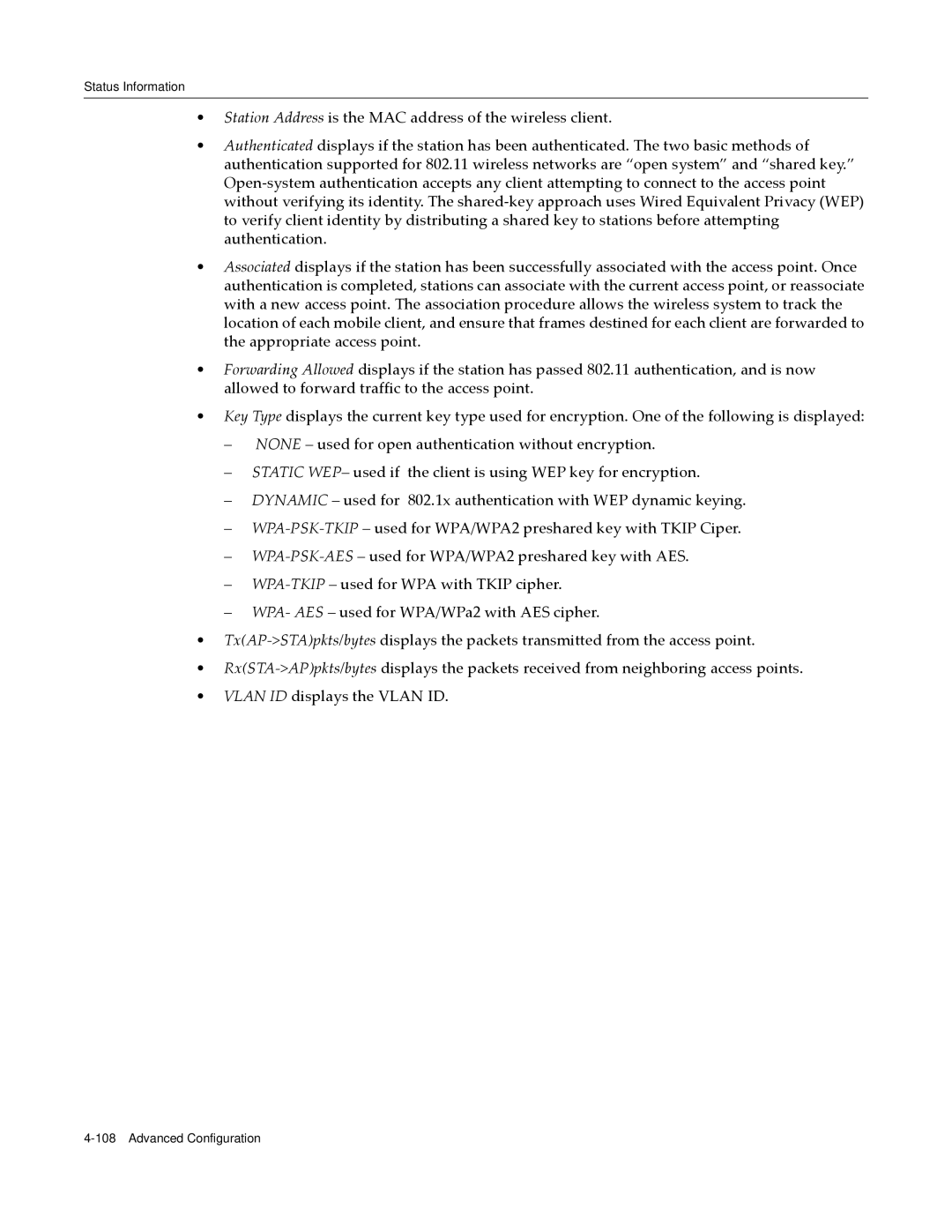Status Information
•Station Address is the MAC address of the wireless client.
•Authenticated displays if the station has been authenticated. The two basic methods of authentication supported for 802.11 wireless networks are “open system” and “shared key.” Open‐system authentication accepts any client attempting to connect to the access point without verifying its identity. The shared‐key approach uses Wired Equivalent Privacy (WEP) to verify client identity by distributing a shared key to stations before attempting authentication.
•Associated displays if the station has been successfully associated with the access point. Once authentication is completed, stations can associate with the current access point, or reassociate with a new access point. The association procedure allows the wireless system to track the location of each mobile client, and ensure that frames destined for each client are forwarded to the appropriate access point.
•Forwarding Allowed displays if the station has passed 802.11 authentication, and is now allowed to forward traffic to the access point.
•Key Type displays the current key type used for encryption. One of the following is displayed:
–NONE – used for open authentication without encryption.
–STATIC WEP– used if the client is using WEP key for encryption.
–DYNAMIC – used for 802.1x authentication with WEP dynamic keying.
–WPA‐PSK‐TKIP – used for WPA/WPA2 preshared key with TKIP Ciper.
–WPA‐PSK‐AES – used for WPA/WPA2 preshared key with AES.
–WPA‐TKIP – used for WPA with TKIP cipher.
–WPA‐ AES – used for WPA/WPa2 with AES cipher.
•Tx(AP‐>STA)pkts/bytes displays the packets transmitted from the access point.
•Rx(STA‐>AP)pkts/bytes displays the packets received from neighboring access points.
•VLAN ID displays the VLAN ID.
